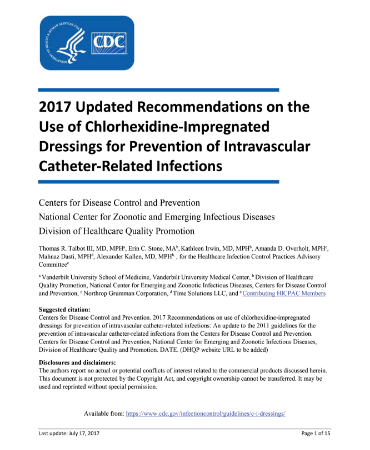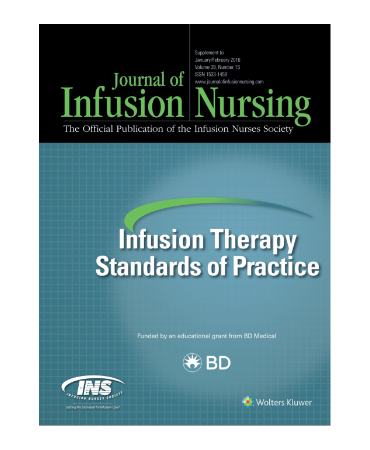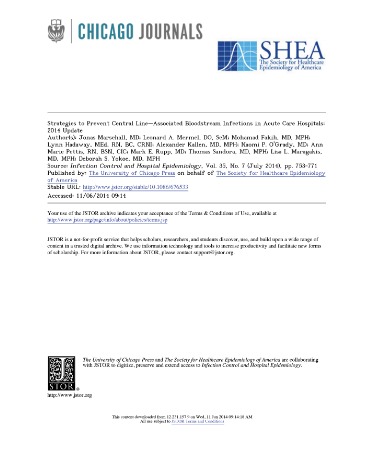3M products align with current best practice standards.
의료 관련 공인기관에서는 BSI를 줄일 수 있는 최선의 방법이 무엇인지에 대한 조사가 계속되고 있습니다.
3M™은 이 기관들에서 공표한 표준 지침에 부합하는 제품군을 제공하고 있습니다.
Guideline

CDC 2017
Centers for Disease Control: Guidelines for the Prevention of Intravascular Catheter-Related Infections(2017 Updated)¹
For patients aged 18 years and older: a. Chlorhexidine-impregnated dressings with an FDA-cleared label that specifies a clinical indication for reducing catheter-related bloodstream infection(CRBSI) or catheter associated blood stream infection(CABSI) are recommended to protect the insertion site of short-term, non-tunneled central venous catheters. Category IA Use a sutureless securement device to reduce the risk of infection for intravascular catheters. Category II
Checklist for prevention of central line-associated bloodstream infections(2017)
- Handle and maintain central lines appropriately: For patients 18 years of age or older, use a chlorhexidine impregnated dressing with an FDA cleared label that specifies a clinical indication for reducing CLABSI for short-term non-tunneled catheters unless the facility is demonstrating success at preventing CLABSI with baseline prevention practices.
- Supplemental strategies for consideration: Antiseptic impregnated caps for access ports.

INS 2016
INS Infusion Therapy Standards of Practice(2016)²
Standard 34: Use of passive disinfecting caps containing disinfecting agent(IPA) shown to reduce intraluminal microbial contamination and reduce rates of CLABSIs. Use of disinfection caps on peripheral catheters has limited evidence but should be considered.
Standard 37: Consider the use of an engineered stabilization device(ESD*) to stabilize and secure Vascular Access Devices(VADs). Inadequate stabilization and securement can cause unintentional dislodgement and complications requiring premature VAD removal. Sutures are associated with needle stick injury, in addition to supporting the growth of biofilm and increasing the risk of catheter-related bloodstream infection.
Standard 41: Use chlorhexidine-impregnated dressings over CVADs to reduce infection risk when extraluminal route is primary source of infection.

SHEA 2014
Society for Healthcare Epidemiology of America(SHEA) Strategies to Prevent CLABSI in Acute Care Hospitals(2014)³
Use chlorhexidine-containing dressings for CVCs in patients over 2 months of age
(quality of evidence: I).
Use an antiseptic-containing hub/connector cap/port protector to cover connectors
(quality of evidence: I).
Reference
- O’Grady NP, Alexander, M., Burns, L.A., et al., the Healthcare Infection Control Practices Advisory Committee (HICPAC) Guidelines for the prevention of intravascular catheter-related infections, 2011. 2017 update.
- Gorski L, Hadaway L, Hagle ME, McGoldrick M, Orr M, Doellman D. Infusion Therapy Standards of Practice. J Infus Nurs. 2016;39(suppl 1): S1-S59.
- Marschall J, Mermel LA, Fakih M, et al. Strategies to prevent central line-associated bloodstream infections in acute care hospitals. 2014 update. Infect Control Hosp Epidemiol. 2014;35(7):753-771.

